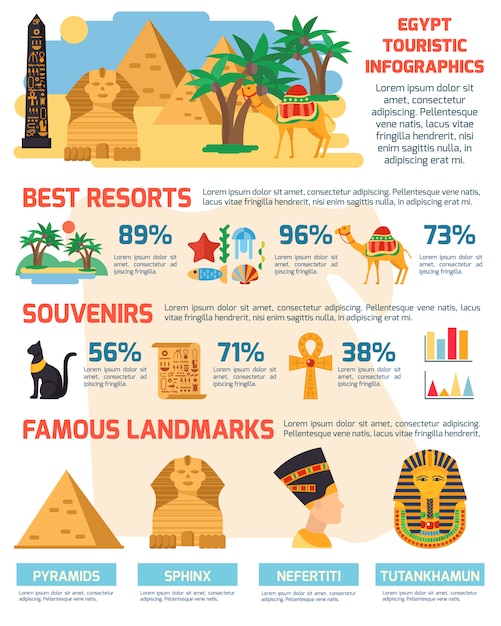Fascinating Facts about the Sphinx

The Great Sphinx is believed to be over 4,500 years old.
The Sphinx is located on the Giza Plateau in Egypt.
The statue depicts a mythical creature with the body of a lion and the head of a pharaoh.
It is the largest monolithic statue in the world, carved from a single piece of limestone.
The face of the Sphinx is believed to represent Pharaoh Khafre, who ruled during the Fourth Dynasty.
The Sphinx measures approximately 240 feet in length and stands 66 feet tall.
The original color of the Sphinx was thought to be vibrantly painted.
The Sphinx was buried in sand for many centuries and was excavated in the 19th century.
There are many theories about the purpose of the Sphinx, including as a guardian of the pyramids.
The lack of a nose on the Sphinx has led to many myths and legends about its missing feature.
The Sphinx is aligned to face the rising sun.
It is estimated that the Sphinx weighs around 200 tons.
The Sphinx has undergone several restorations over the centuries to preserve its structure.
The Sphinx is a popular subject in ancient Egyptian art and is often depicted alongside pharaohs.
The statue has inspired many writers, artists, and explorers throughout history.
The Sphinx is a UNESCO World Heritage site.
The statue often features in modern pop culture, such as movies and video games.
The face of the Sphinx is said to represent wisdom and power.
Fascinating Facts about the Sphinx part 2
The Sphinx was originally surrounded by temples and other structures, but they have mostly been destroyed.
There are many theories and debates about the symbolism and meaning behind the Sphinx’s unique design.
The Sphinx has survived numerous earthquakes and erosion over millennia.
It is believed that the Sphinx was built using primitive tools and techniques.
The Sphinx has been replicated in various forms across the world, particularly in Las Vegas.
The Sphinx has witnessed the rise and fall of several civilizations throughout its existence.
Many tourists visit the Sphinx each year to marvel at its grandeur and historical significance.
The Sphinx is often associated with mystery and secrets due to its enigmatic smile.
The Sphinx’s position and orientation align with specific celestial and astral events.
The Sphinx is considered one of the most iconic symbols of ancient Egypt.
The Sphinx was once covered in a layer of protective plaster to preserve its features.
The Sphinx’s headwear, known as a nemes, is a characteristic feature of ancient Egyptian royalty.
The Sphinx’s body was originally covered in a layer of smooth limestone, which has mostly eroded over time.
The Sphinx has been the subject of many archaeological studies and excavations.
The Sphinx is depicted in many ancient Egyptian papyri and hieroglyphics.
The Sphinx has been an inspiration for architecture and sculpture in various cultures around the world.
The Sphinx is often associated with the Egyptian sun god, Ra.
The Sphinx has withstood countless sandstorms that have swept across the desert.
The Sphinx is a symbol of the enduring and timeless nature of Egyptian civilization.
The Sphinx’s location provides a panoramic view of the surrounding landscape.
The Sphinx has been an object of fascination for tourists and explorers since its rediscovery.
The Sphinx’s paws are over 50 feet long and were once adorned with hieroglyphic inscriptions.
The Sphinx has been a target of vandalism and destruction throughout history.
The Sphinx’s construction method and purpose remain a topic of debate among Egyptologists.
The Sphinx’s ears are disproportionately large compared to the rest of its head.
The Sphinx is often depicted with its front paws resting on a platform or plinth.
The Sphinx’s appearance has changed over time due to erosion and restoration efforts.

